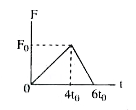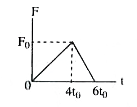The kind of evolution seen between flying insects, birds and bats is
divergent evolution.
parrallel evolution.
retrogressive metamorphosis
convergent evolution
The correct Answer is:D
To solve the question regarding the type of evolution seen between flying insects, birds, and bats, we can follow these steps:
1. Understand the Types of Evolution:
- Familiarize yourself with the four types of evolution mentioned: divergent evolution, parallel evolution, retrogressive metamorphosis, and convergent evolution.
2. Define Each Type:
- Divergent Evolution: This occurs when related species evolve different traits, leading to homologous organs (similar structure, different function).
- Parallel Evolution: This is when two or more related species evolve in similar ways due to similar environmental pressures.
- Retrogressive Metamorphosis: This refers to a process where an organism loses certain features as it develops, such as a tadpole losing its tail when it becomes a frog.
- Convergent Evolution: This occurs when unrelated species evolve similar traits independently, leading to analogous organs (different structure, similar function).
3. Analyze the Given Organisms:
- The question mentions flying insects, birds, and bats. Although these organisms belong to different taxonomic groups, they all have developed the ability to fly.
4. Identify the Type of Evolution:
- Since flying insects, birds, and bats have evolved the ability to fly independently, despite their different structures, this is an example of convergent evolution. They have developed analogous structures (wings) that serve the same function (flight) but are structurally different.
5. Select the Correct Answer:
- Based on the analysis, the correct answer to the question is convergent evolution.
Final Answer:
The kind of evolution seen between flying insects, birds, and bats is convergent evolution.
---
- Familiarize yourself with the four types of evolution mentioned: divergent evolution, parallel evolution, retrogressive metamorphosis, and convergent evolution.
- Divergent Evolution: This occurs when related species evolve different traits, leading to homologous organs (similar structure, different function).
- Parallel Evolution: This is when two or more related species evolve in similar ways due to similar environmental pressures.
- Retrogressive Metamorphosis: This refers to a process where an organism loses certain features as it develops, such as a tadpole losing its tail when it becomes a frog.
- Convergent Evolution: This occurs when unrelated species evolve similar traits independently, leading to analogous organs (different structure, similar function).
- The question mentions flying insects, birds, and bats. Although these organisms belong to different taxonomic groups, they all have developed the ability to fly.
- Since flying insects, birds, and bats have evolved the ability to fly independently, despite their different structures, this is an example of convergent evolution. They have developed analogous structures (wings) that serve the same function (flight) but are structurally different.
- Based on the analysis, the correct answer to the question is convergent evolution.
The kind of evolution seen between flying insects, birds, and bats is convergent evolution.
Similar Questions
Knowledge Check
Wings of insects and birds are
AAnalogousBHomologousCVestigialDAtavism
Wings of birds and insects
View SolutionA ball of mass 'm' is thrown with a speed v0 towards a bat. It rebounds along the same speed 2v0 . The variation of interaction force between the bat and ball is shown

Average force exerted by the bat on the ball is
View SolutionA ball of mass 'm' is thrown with a speed v0 towards a bat. It rebounds along the same speed 2v0 . The variation of interaction force between the bat and ball is shown

Maximum force exerted by the bat on the ball is
View SolutionThe wings of an insect and a bat exhibit
View SolutionThe wings of an insect and a bat exhibit
View SolutionAnimals that can fly in the air such as birds and bats are
View SolutionDifferentiation between flying lizard and bird. Draw the diagram.
View Solution
